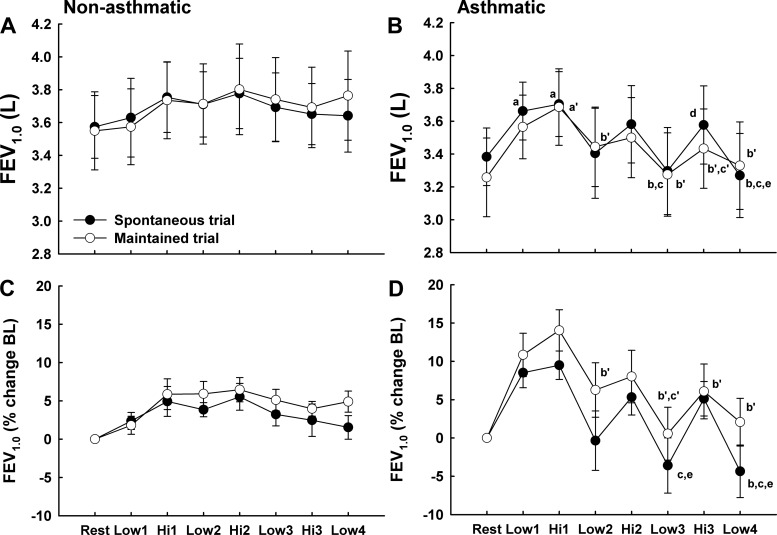Fig. 4.
Forced expiratory volume 1.0 s (FEV1.0) in liters and as a percent change from baseline (BL) in nonasthmatic (A and C) and asthmatic (B and D) subjects during spontaneous (SVT) and maintained (MVT) ventilation trials. The FEV1.0 is from the forced exhalation maneuver completed during the fourth min of exercise at each workload. In both subject groups, a progressive increase in FEV1.0, signifying bronchodilation (BD), occurred during the 1st 2 exercise workloads during SVT and MVT; however, the magnitude of BD was greater in asthmatic subjects. Following Hi-1, airway caliber fluctuated with exercise workload in the asthmatic subjects whereas it remained constant in the nonasthmatic subjects. Note that FEV1.0 fluctuated with exercise workrate similarly during SVT and MVT in asthmatic subjects. SVT trial: aP < 0.05 vs. rest; bP < 0.05 vs. Hi-1; cP < 0.05 vs. Hi-2; dP < 0.05 vs. Low-3; eP < 0.05 vs. Hi-3. MVT trial: a′P < 0.05 vs. rest; b′P < 0.05 vs. Hi-1; c′P < 0.05 vs. Hi-2.

